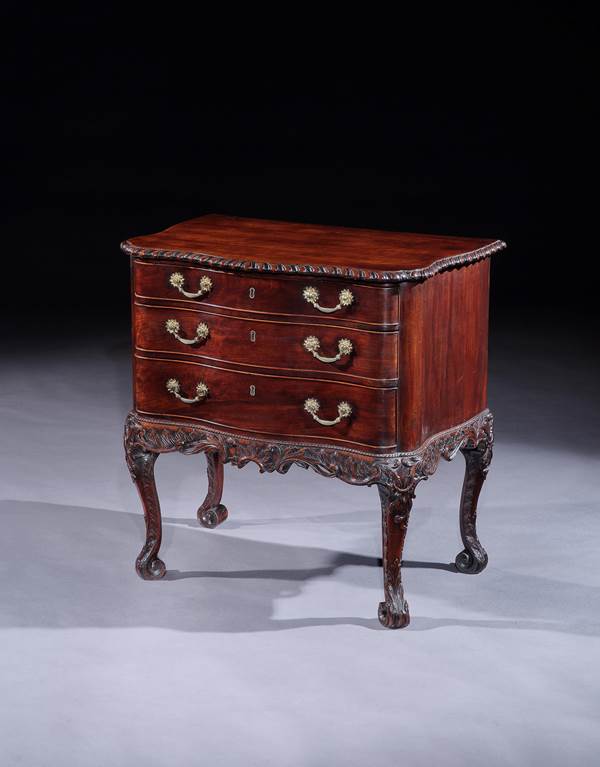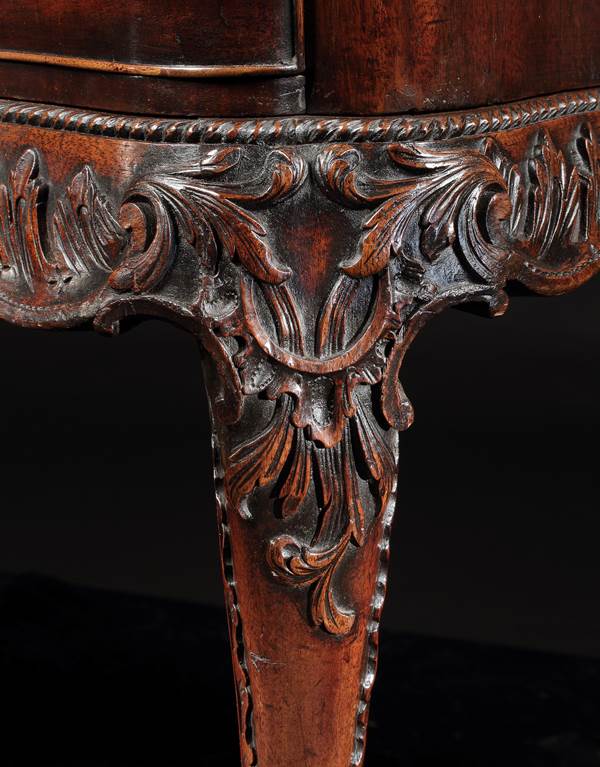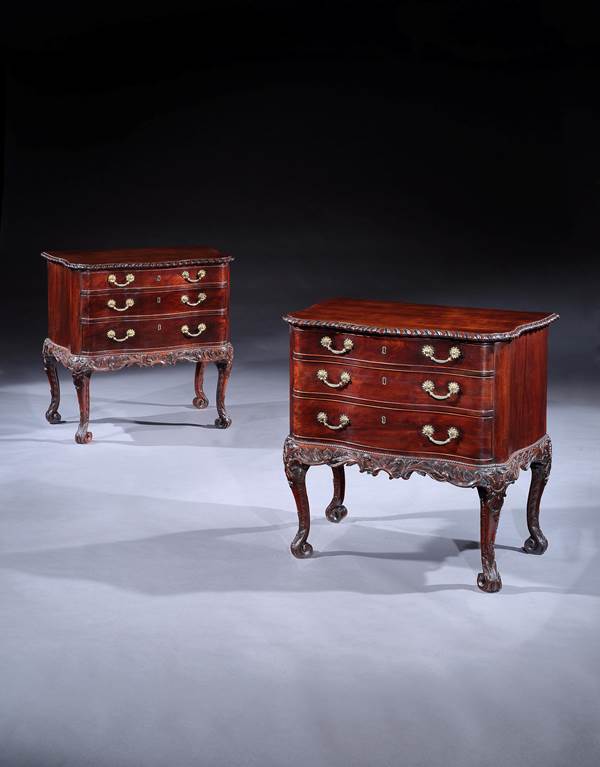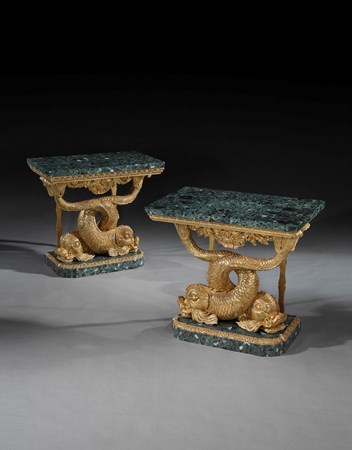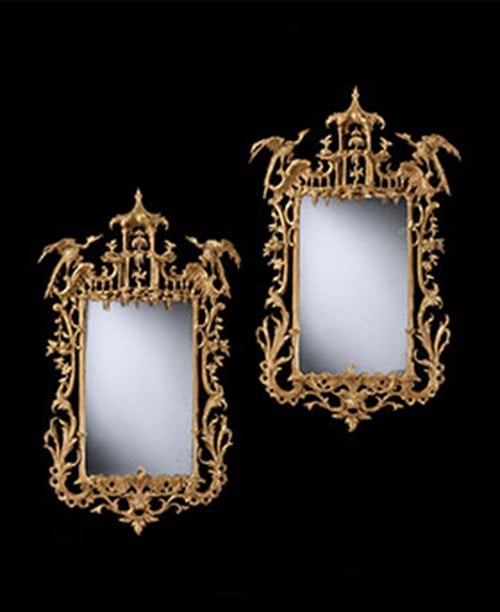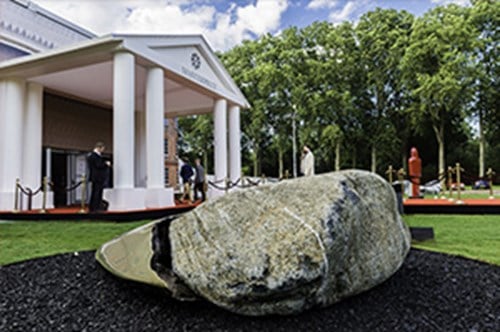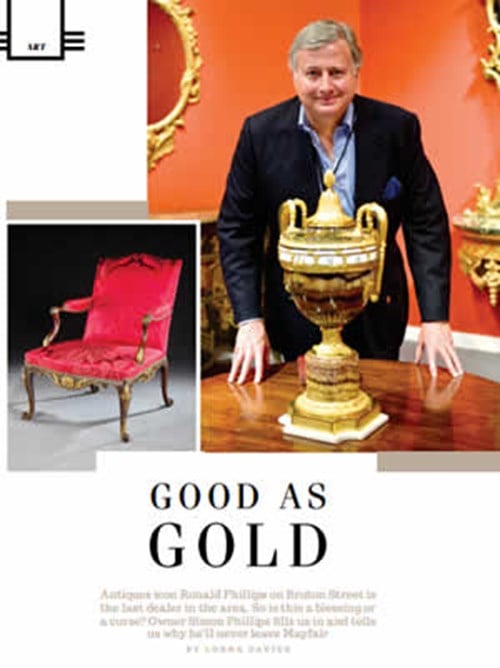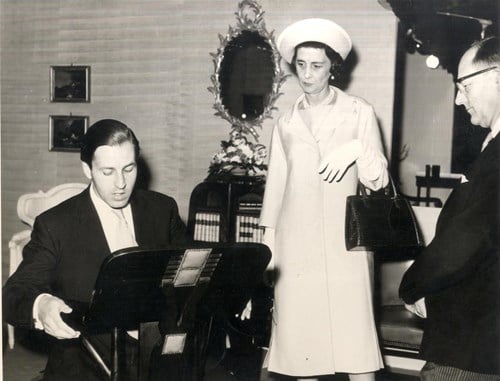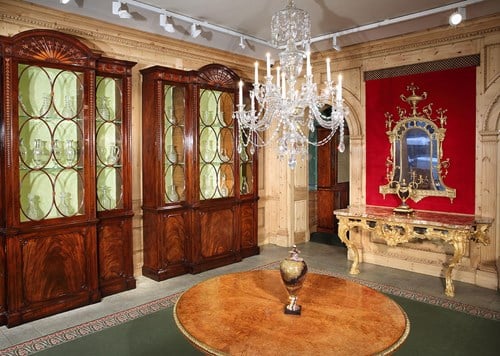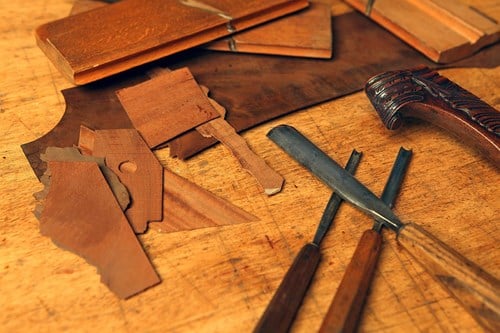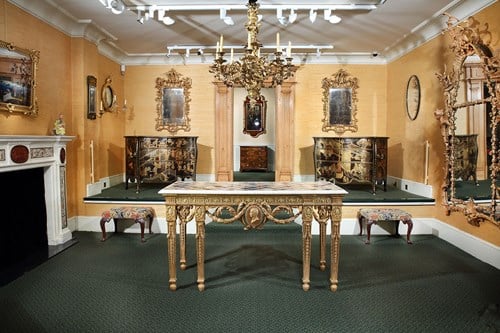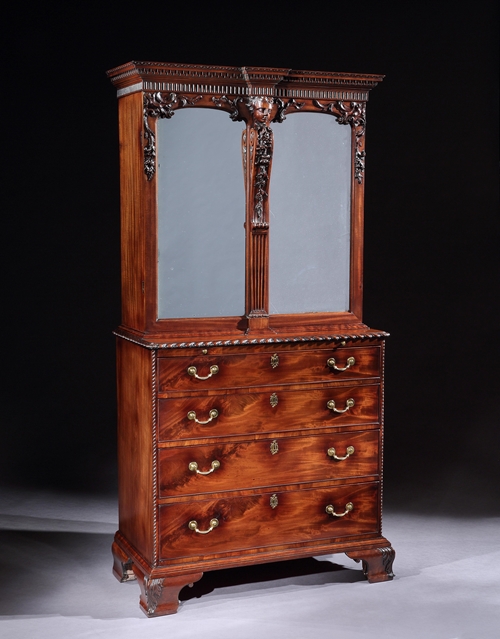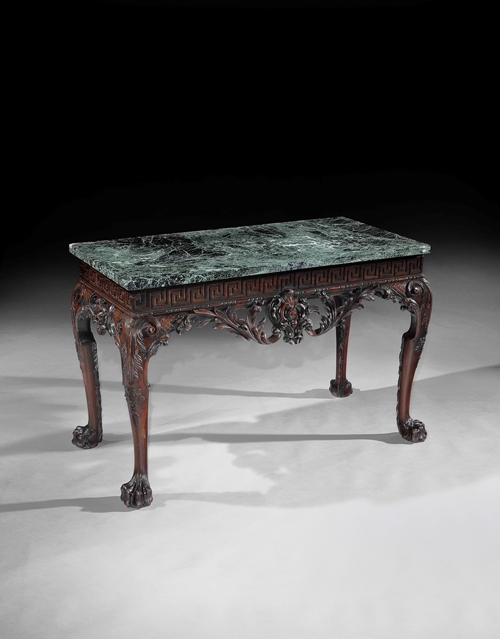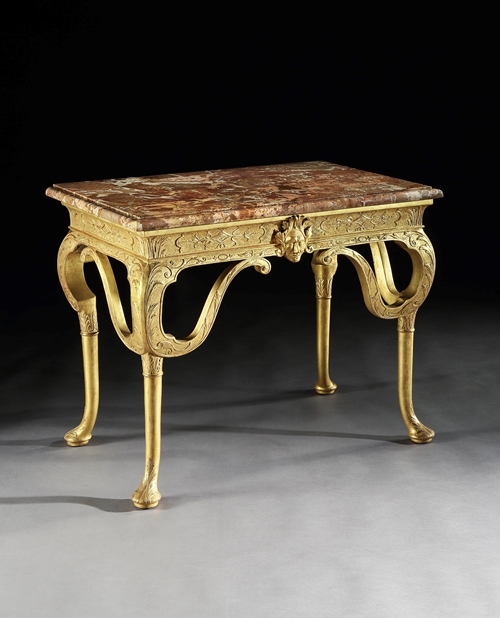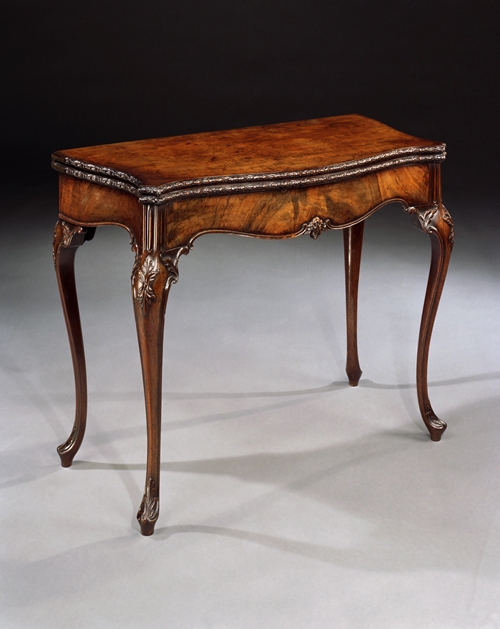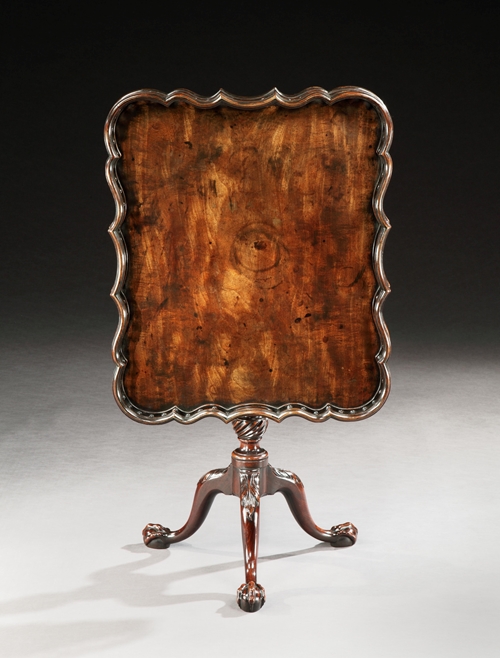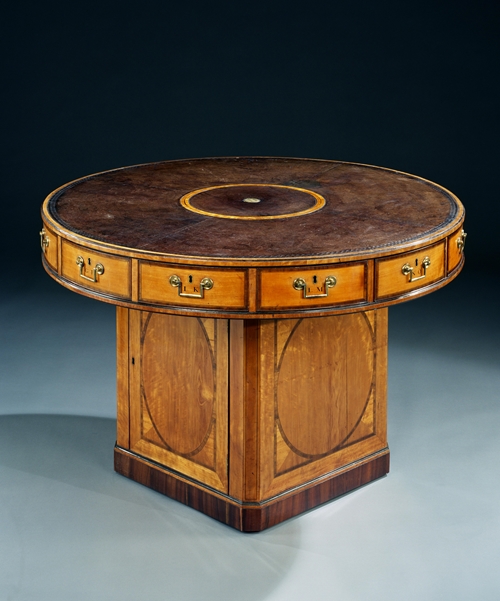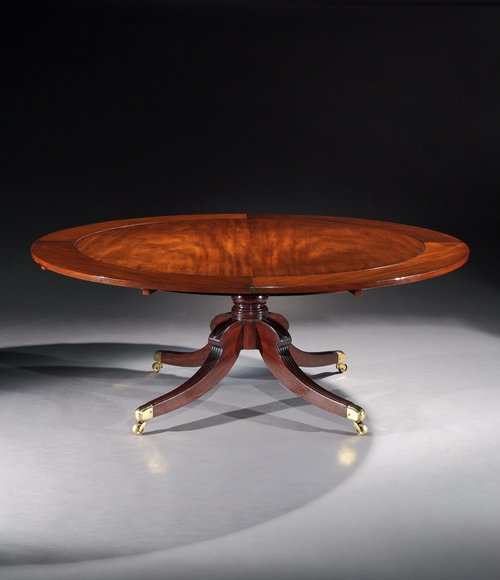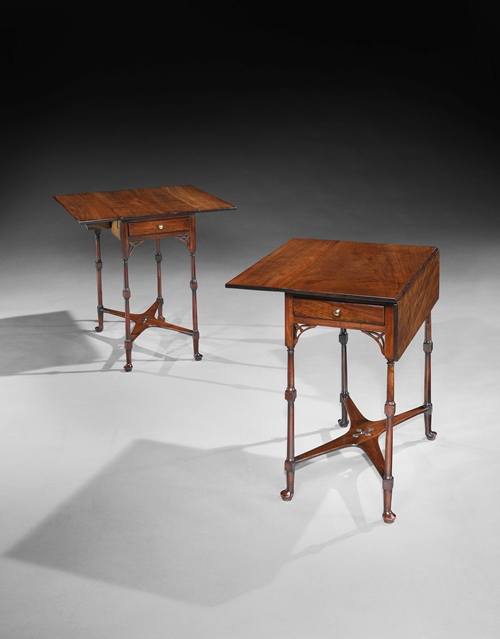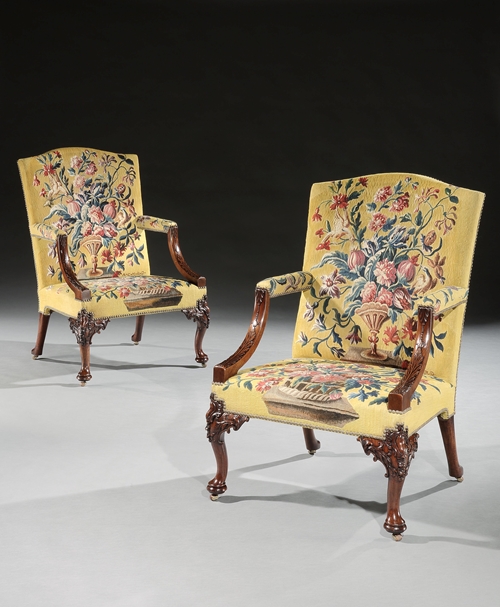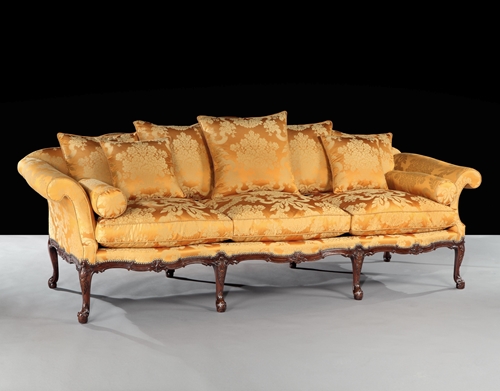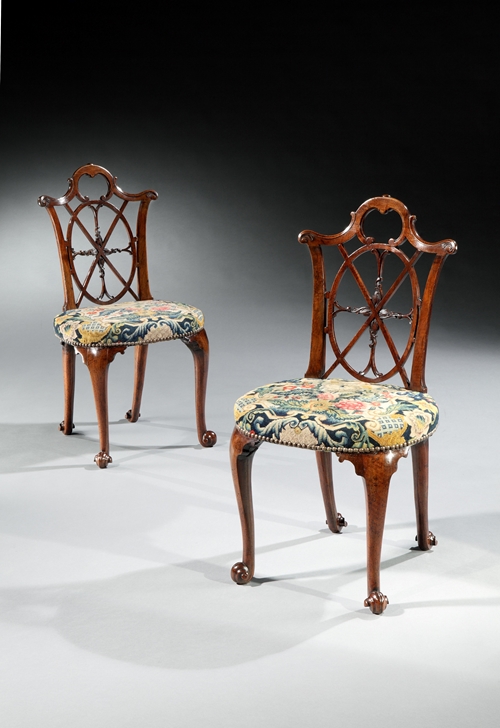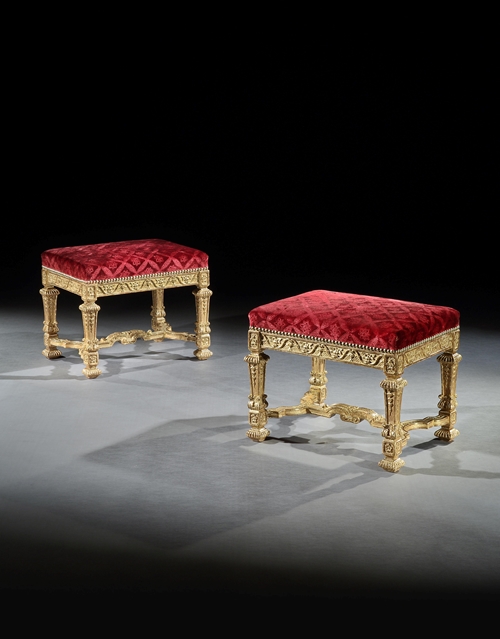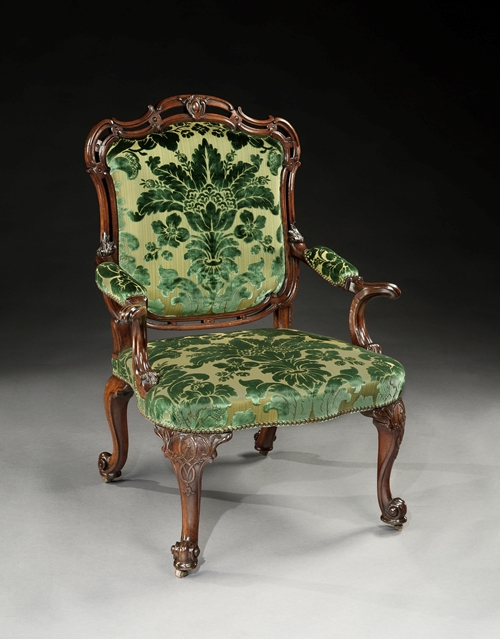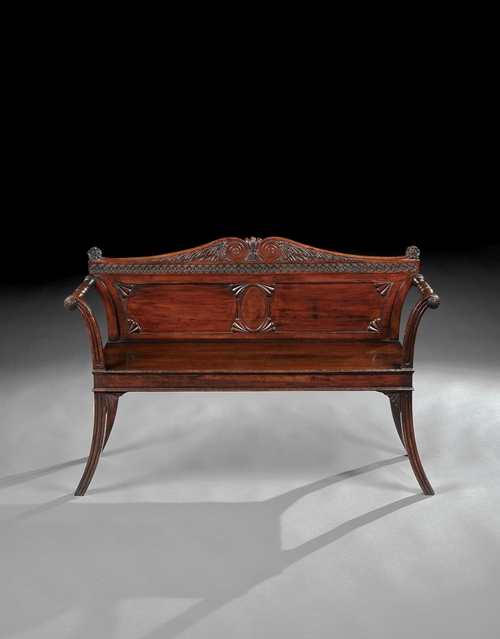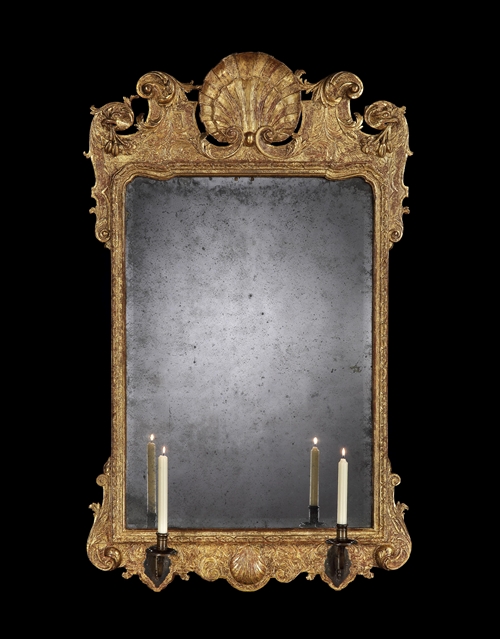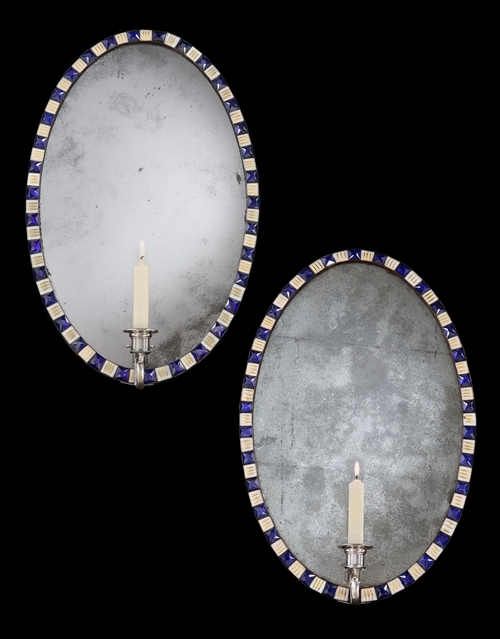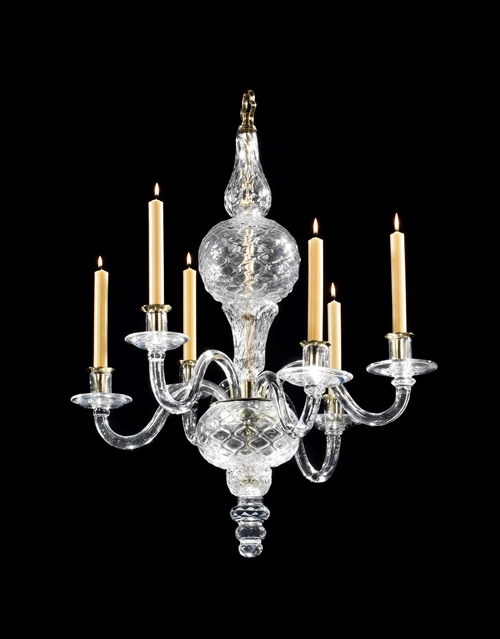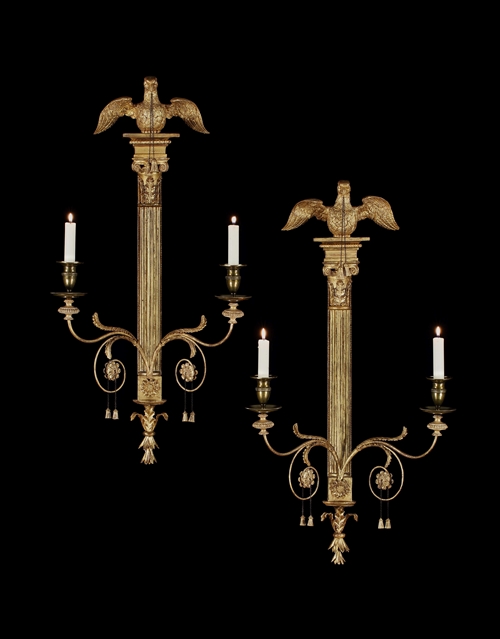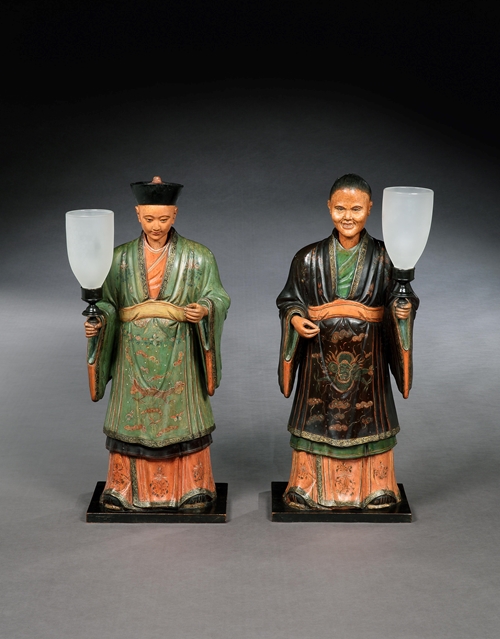Note: The ornate brass handles are original. The handles on one chest have been repositioned because the original holes were misaligned.
This exceptional pair of small commodes is notable for its unusual features of a gently undulating serpentine front with rounded corners and, most strikingly, being mounted on a separate stand with shaped frieze and scroll legs. A small group of other commodes have the same features. They usually contain three drawers with curved corners, and generally have plain veneers which emphasise the fine metalwork and carved features; the carving is usually of bold design and well executed. Most chests in this group are of small scale, similar to this pair, but a few longer versions also exist.
A kneehole desk or dressing chest with these characteristics is illustrated in English Furniture by Margaret Jourdain and F. Rose, and a longer commode with drawers behind doors is illustrated in 18th Century English Furniture: The Norman Adams Collection by Christopher Claxton Stevens and Stewart Whittington.
Commodes of this type, either as single items or occasionally as pairs, formed part of some of the most important collections of English furniture, including the collections of Samuel Messer, E. B. Moller and H. B. Joel.
It has not been possible so far to identify a maker for this group, which must all have come from the same workshop. It is however clear that they were created by an experienced and confident carver, probably in London.
A drawing by John Linnell in the collection of the Victoria and Albert Museum, London, relates to a longer version, and it is conceivable that this group was produced by the Linnell workshop, but without further evidence this can only be speculation.
Literature:
Illustrated:
Parke Bernet, Fine English Furniture, Decorations and Clocks, New York, 6. November 1976, p. 168, lot 167, one of the pair illustrated.
Literature:
Margaret Jourdain and F. Rose, English Furniture, The Georgian Period 1750-1830, 1953, pp. 147-8.
R. W. Symonds, Furniture Making in Seventeenth and Eighteenth Century England, 1955, pp. 108-9, figs. 162-3.
Christopher Claxton Stevens and Stewart Whittington, 18th Century English Furniture: The Norman Adams Collection, 1983, pp. 372-5.
Christie’s, ‘The Samuel Messer Collection of English Furniture Clocks and Barometers’, sale catalogue, London, 5 December 1991, pp. 136-41, lots 104, 105 & 106.
-
Provenance
Collection of Lady Weir, New York, USA, until 1976.
Private collection, USA.
Looking for something similar? YOU MAY ALSO LIKE
YOU HAVE RECENTLY VIEWED ITEMS
- CAN WE HELP YOU?
- +44 (0)20 7493 2341
- [email protected]
